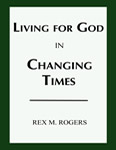We attended high school during the peak of the 1960s counter culture. Scholars have since described our high school years as some of the most socially volatile in American history.
The Counter Culture Movement, generally dated 1956-1974, reached its zenith between 1965-1972. Our high school years were 1966-1970.
We were part of the post-War Baby Boom, among some 70 million teenagers in the 1960s. This many youth, this relatively affluent, and this able to access education was something the country had never experienced before. We were post-Sputnik (1957) teens, the older generation’s hope for defeating the Soviets and “godless communism.”
We witnessed the Space Race. In 1963, our own Col. John Glenn, who we proudly noted grew up in a village not far from Small Town, became the first American to orbit the earth. By the time we got into high school we watched with the rest of the world while Apollo XI orbited and Neil Armstrong and Buzz Aldrin walked on the moon July 20, 1969. Months later during our senior year we watched in tense anticipation as the “successful failure” of Apollo XIII played out on national television April 11-17, 1970.
We watched the Civil Rights Movement change society forever. We got to see and hear one of the greatest speeches ever delivered, Martin Luther King’s Jr’s “I Have A Dream,” from the steps of the Lincoln Memorial August 28, 1963. We experienced the landmark passage of the Civil Rights Act, 1964, and the Voting Rights Act, 1965. We winced at pictures of violence during the Selma Marches and the Watts Riots in 1965. We grieved with the nation when MLK, Jr. was assassinated April 4, 1968 and RKF was assassinated June 5, 1968. In the midst of it all we learned to say “Black” instead of “Negro.”
Our years in high school were peak years, if peak is the right word, of the Viet Nam War. It was a difficult time not only for the American personnel lost—58,267 KIA, 303,644 WIA, 1,6711 MIA—but for our rapidly declining faith in the capacity of national leaders to tell the truth. We endured the back-to-back presidencies of Lyndon Baines Johnson and Richard Milhous Nixon, two of the most morally shallow men ever to occupy the White House.
The military “Draft” still existed, ending later in 1973. It was a lottery that determined the order in which people could be called up for military service based upon when their birth date had been chosen.
In 1971, my number was 138. My cousin’s was 365. Go figure. Up till that point in time anyone with a number as low as 138 was going to get called. I was in college by then and wanted to stay there. Ultimately, I wasn’t called because I benefited from Nixon’s “Vietnamization” program, his process of gradually pulling our troops out of Viet Nam while turning over to the South Viet Nam military the responsibility for the war.
Viet Nam dominated the news while we were in high school. And it got worse. Just before the end of our senior year, May 4, 1970, members of the Ohio National Guard fired into a crowd of students on the Kent State University campus. In 13 seconds, 67 shots were fired, 4 students died, and 9 were wounded. This set off student protests across the nation forcing the closing of hundreds of college and university campuses and eventually influencing national politics.
A lot happened in those years that rank as stressful. Some things rank as silly. Mini-skirts, Go-Go boots, men’s hair getting longer by the week, wide collars, Nehru jackets, ever wider ties that eventually featured 5 inch wide bibs masquerading as ties, Afros, bell-bottom pants that got broader each year, Motown, Rock emerging from Rock and Roll.
Small Town escaped a lot of this, initially, but eventually change came calling.
© Rex M. Rogers – All Rights Reserved, 2010
*This blog may be reproduced in whole or in part with a full attribution statement. Contact Dr. Rogers or read more commentary on current issues and events at www.rexmrogers.com or follow Dr. Rogers at www.twitter.com/RexMRogers.


